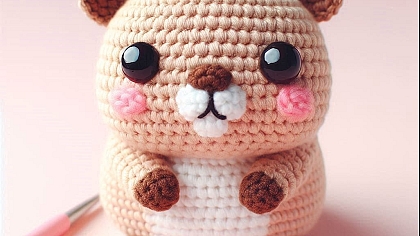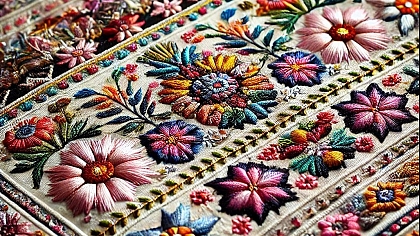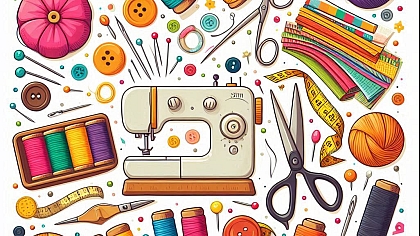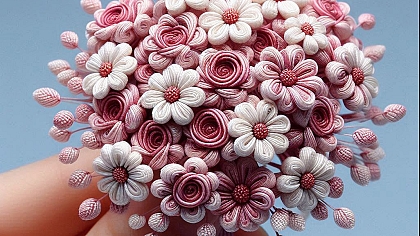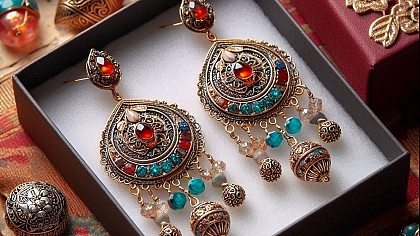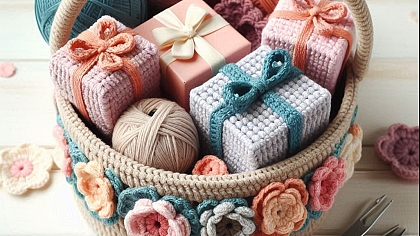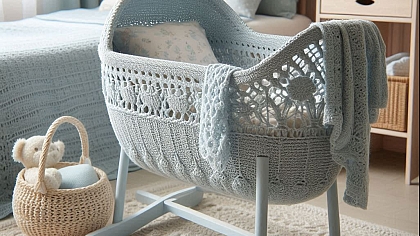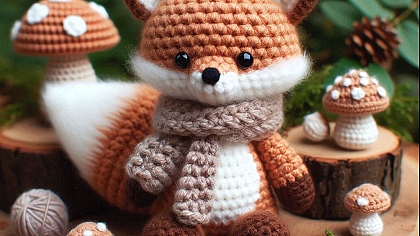
Therapeutic Benefits of Embroidery: Crafting for Mindfulness and Relaxation
Embroidery has long been admired for its intricate designs and artistic appeal, but beyond its aesthetic charm lies a therapeutic practice that fosters mindfulness and relaxation. In recent years, the age-old craft has witnessed a revival, not only among seasoned artisans but also among individuals seeking a calm and reflective activity in their daily lives. While the creative process in embroidery is undeniably rewarding, its benefits reach far deeper, offering a mindful escape from the pressures of modern life.
The Art of Slowing Down
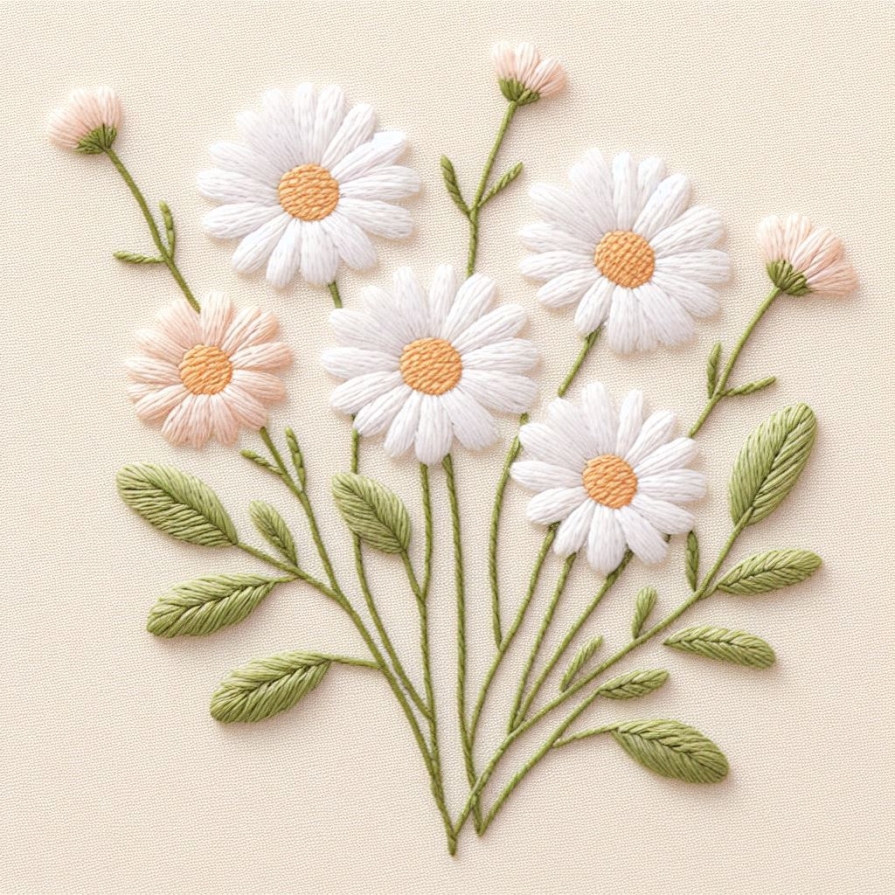
In a fast-paced world that demands constant attention, embroidery provides a unique opportunity to slow down and engage fully in the present moment. Unlike many activities today that push for speed and efficiency, embroidery requires patience. Each stitch must be carefully placed, and every thread carefully chosen to align with the overall design. This slow, methodical process invites practitioners to be present, focusing solely on the movement of their needle and thread. In doing so, embroidery becomes a form of meditation, where external distractions melt away, leaving only the rhythm of the craft.
The deliberate nature of embroidery helps cultivate mindfulness, which is the practice of being fully aware of the present moment. Engaging with a repetitive task, such as stitching, can anchor the mind, allowing it to drift into a meditative state. The repetitive motion calms the nervous system, reducing stress and anxiety. As one thread follows the next, the embroiderer can experience a sense of flow, where time seems to slow down, and the act of creation becomes an immersive, almost trance-like experience.
Stress Relief Through Creativity
Embroidery provides a creative outlet that offers tangible results. In a world where much of what we do is abstract or digital, the act of creating something with our hands can be deeply satisfying. This tangible form of creativity is not only visually rewarding but also emotionally uplifting. Completing a piece, whether simple or elaborate, brings a sense of accomplishment and pride that can lift the mood and provide relief from the strains of daily life.
This form of creative expression allows the embroiderer to externalize thoughts, feelings, and even stresses. As each stitch takes shape, it becomes a form of visual storytelling, where the fabric captures emotions that may be difficult to articulate in words. Whether creating an intricate floral pattern or a simple geometric design, the act of embroidery becomes a personal journey, where the individual can express themselves freely. The repetitive nature of embroidery, combined with this creative expression, provides a safe space for individuals to release pent-up emotions and stress, transforming the craft into a form of emotional therapy.
Embroidery and Mindfulness
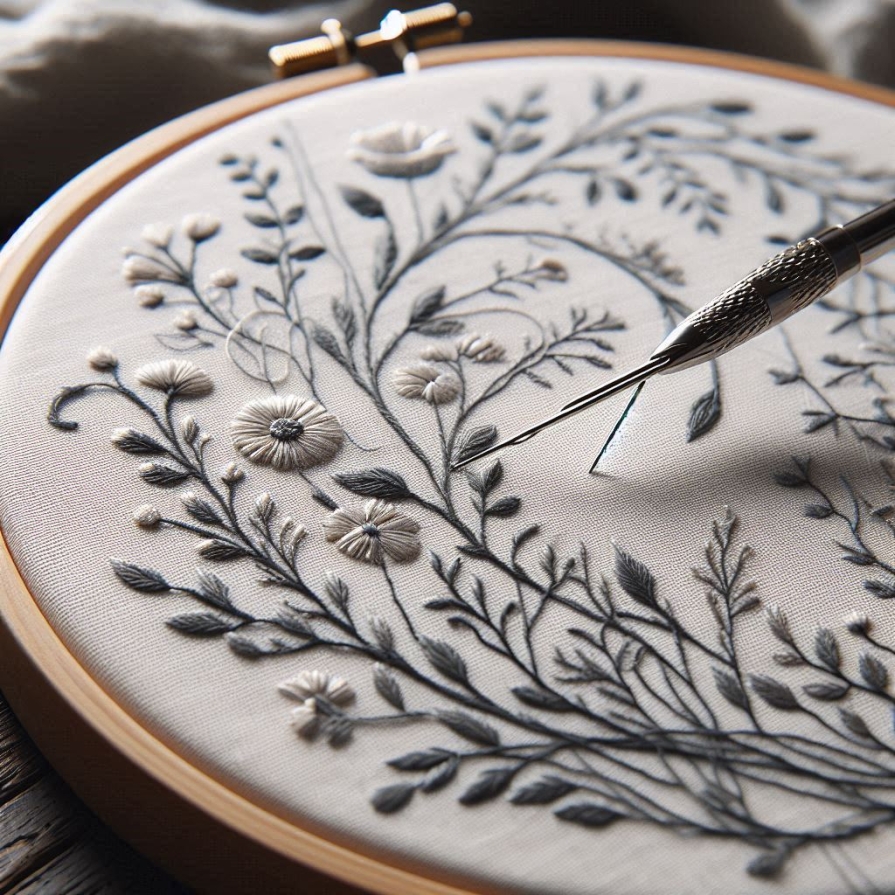
Mindfulness is the practice of focusing on the present moment, and embroidery offers a perfect medium for this. The tactile nature of the craft demands attention to detail, from threading the needle to ensuring each stitch aligns with the design. This level of focus helps ground the practitioner in the here and now, pulling their attention away from worries or distractions.
In embroidery, the embroiderer must be attentive to the texture of the fabric, the tension of the thread, and the movement of the needle. Each element requires thought and precision, fostering a state of active concentration. This immersion in the task allows the mind to rest from the constant barrage of thoughts and anxieties that often fill our day. Instead of worrying about future tasks or ruminating on past events, embroidery provides a meditative space where the present moment is all that matters.
Over time, this practice of mindfulness through embroidery can lead to increased mental clarity and a reduction in stress. The simple act of focusing on the stitch at hand can quiet the mind, offering a reprieve from the mental noise that often accompanies a busy life. Many embroiderers find that, through their craft, they are better able to manage stress and anxiety, as the focus required provides a mental break from the worries that typically dominate their thoughts.
The Physical Benefits of Embroidery
Though embroidery is often viewed primarily as a mental and emotional outlet, it also offers physical benefits. The act of stitching involves fine motor skills, which can improve dexterity and hand-eye coordination over time. For individuals who engage in embroidery regularly, the repetitive motions strengthen the muscles in the hands and fingers, making them more agile.
Moreover, the concentration required for embroidery can also promote better posture, as many embroiderers find themselves sitting in positions that encourage focus and relaxation. While some crafts may be physically demanding, embroidery offers a soothing, low-impact alternative that allows practitioners to engage in a calming activity without overexerting their bodies.
For individuals suffering from chronic pain or illnesses, embroidery can provide a distraction from physical discomfort. The concentration needed to execute each stitch can help take the mind off pain, offering a sense of relief. The meditative aspects of the craft further contribute to pain management, as mindfulness practices have been shown to reduce the perception of pain in many individuals.
Embroidery as a Social Activity

Though often thought of as a solitary pursuit, embroidery can also be a deeply social activity. Many individuals find joy in gathering with fellow crafters to share techniques, ideas, and stories. The act of stitching alongside others creates a sense of community and belonging, where individuals can connect over their shared love of the craft.
In embroidery groups or workshops, participants are able to share not only their skills but also their personal experiences. The act of crafting together fosters a sense of camaraderie, where members support and encourage one another in their creative journeys. This sense of community can be incredibly therapeutic, as it provides a safe space for individuals to share their thoughts and feelings, all while engaging in a meaningful activity.
For those who may struggle with social anxiety or isolation, embroidery groups offer a low-pressure environment where they can engage with others in a structured and supportive setting. The shared focus on the craft can ease social interactions, providing a common interest that facilitates conversation and connection. This social aspect of embroidery adds another layer of therapeutic benefit, helping to combat loneliness and foster a sense of belonging.
The Healing Power of Color and Texture
Embroidery is not just about the act of stitching; it is also about the sensory experience. The colors of the threads, the texture of the fabric, and the patterns that emerge all contribute to the therapeutic nature of the craft. Colors, in particular, have been shown to have a profound impact on mood and emotions. The act of choosing and working with different shades can be a subtle form of color therapy, where the embroiderer selects hues that resonate with their current emotional state or desired feeling.
The tactile experience of embroidery also plays a significant role in its therapeutic benefits. The feel of the thread between the fingers, the softness of the fabric, and the rhythmic motion of the needle all engage the senses, creating a calming and grounding effect. This sensory engagement helps to bring the mind and body into harmony, allowing for a deeper sense of relaxation and peace.
Working with different textures can also provide a form of sensory therapy. For individuals who may struggle with anxiety or restlessness, the act of touching and manipulating various fabrics and threads can provide a soothing sensory experience. This tactile engagement helps to anchor the mind and body, providing a gentle distraction from anxious thoughts or feelings.
Embroidery as a Long-Term Practice for Well-Being
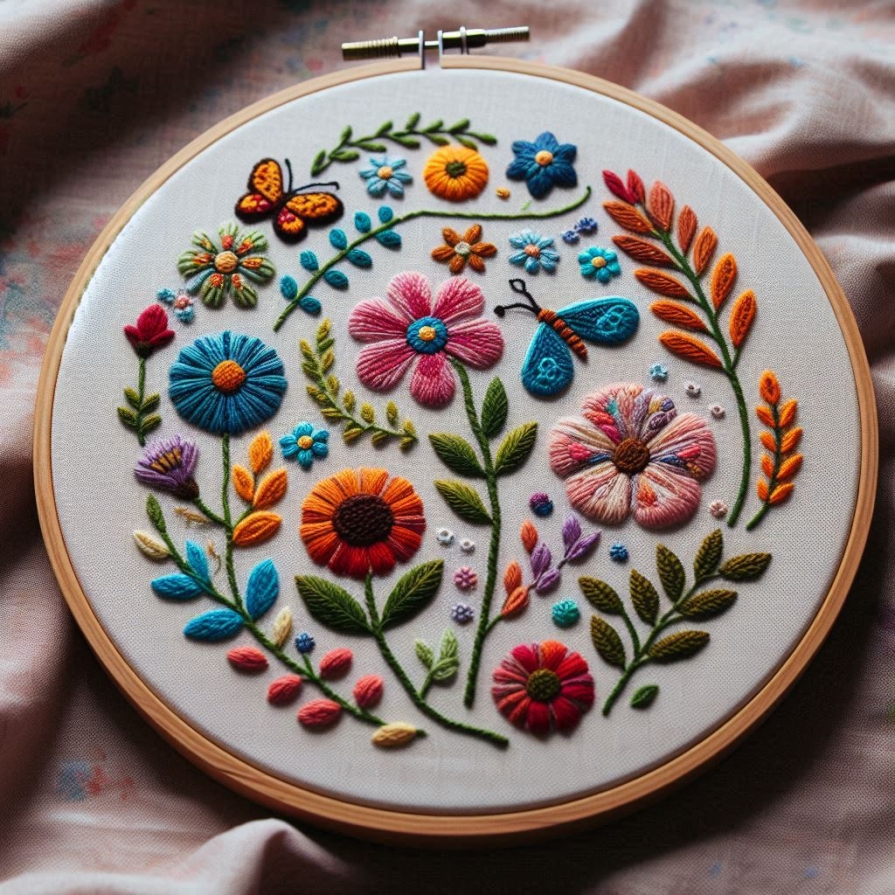
The therapeutic benefits of embroidery are not limited to the immediate sense of relaxation and mindfulness that it provides. Over time, regular engagement with the craft can have lasting positive effects on mental health and well-being. The sense of accomplishment that comes from completing a project, no matter how small, can boost self-esteem and confidence. The creative process itself encourages problem-solving and adaptability, as embroiderers must often adjust their designs or techniques to achieve the desired result.
Engaging in embroidery over a longer period can also foster a deeper sense of connection to tradition and culture. Many embroidery techniques have been passed down through generations, and by practicing the craft, individuals can feel a sense of continuity with the past. This connection to tradition can be deeply grounding, providing a sense of identity and purpose.
Incorporating embroidery into one's daily or weekly routine can create a space for reflection and self-care. The act of setting aside time to engage in a mindful, creative practice can serve as a reminder of the importance of self-compassion and taking moments to breathe in the midst of life's demands.
Crafting a Path to Mindfulness
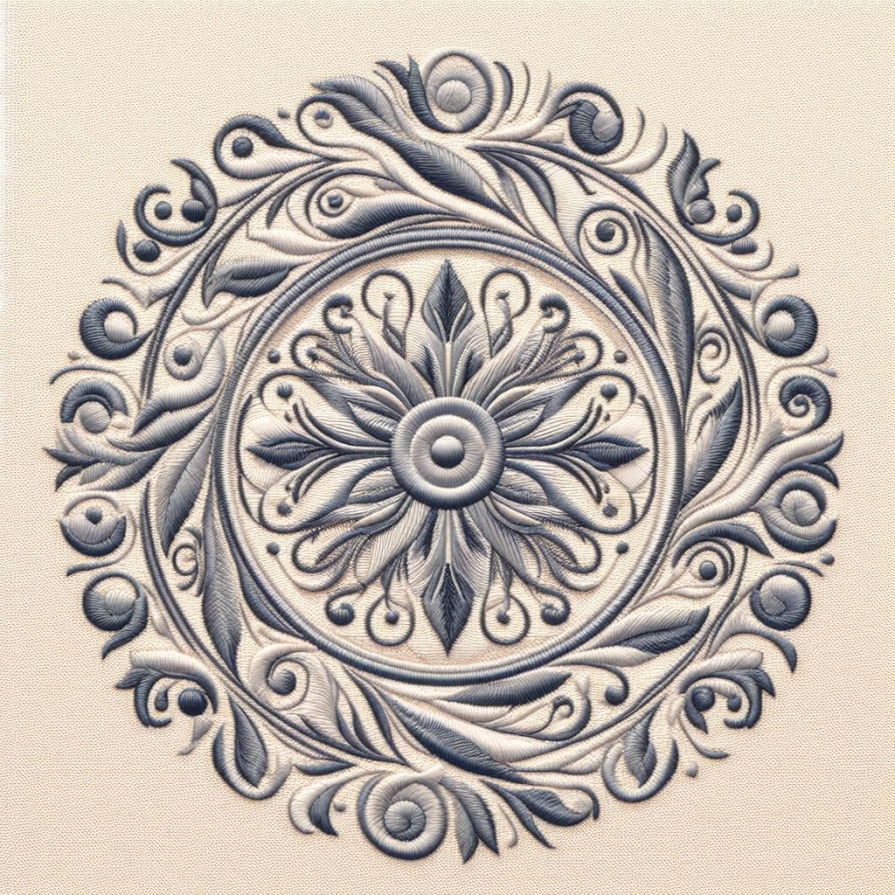
Embroidery offers far more than just a creative outlet; it is a path to mindfulness, relaxation, and emotional healing. The deliberate, repetitive motions of stitching provide a meditative escape from the pressures of modern life, while the sensory experience of working with thread and fabric engages the mind and body in a calming, grounding way. Whether practiced alone or in a group, embroidery fosters a sense of connection, both to oneself and to others, offering a meaningful way to manage stress, anxiety, and the challenges of everyday life.
Through the rhythmic, mindful practice of embroidery, individuals can craft not only beautiful designs but also a deeper sense of well-being. As the needle moves through the fabric, it weaves together threads of relaxation, mindfulness, and emotional balance, creating a tapestry of therapeutic benefits that can be enjoyed for a lifetime.

